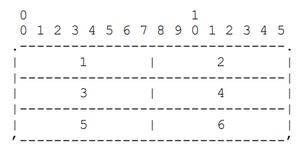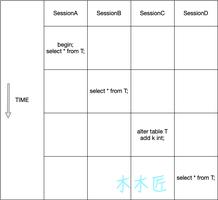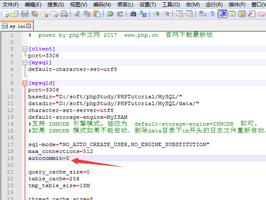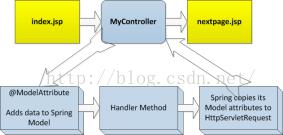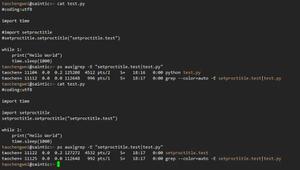Java-Shiro(九):Shiro集成Redis实现Session统一管理

声明:本证项目基于《Java-Shiro(六):Shiro Realm讲解(三)Realm的自定义及应用》构建项目为基础。
版本源码:《https://github.com/478632418/springmv_without_web_xml/tree/master/mybaits-test-dynamic-sql-03》
在实际应用中使用Redis管理Shiro默认的Session(SessionManager)是必要的,因为默认的SessionManager内部默认采用了内存方式存储Session相关信息();当配置了内部cacheManager时(默认配置采用EhCache--内存或磁盘缓存),会将已经登录的用户的Session信息存储到内存或磁盘。无论是采用纯内存方式或者EhCache(内存或磁盘)方式都不适合企业生产应用(特别并发认证用户较多的系统)。
阅读本章请带着这几个问题:
1)如何集成redis存储认证信息,实现分布式session一致?
2)如何统计在线用户数?
3)如何剔除用户?
4)如何实现一个用户最多允许登录几次(单点登录)?
5)当一个用户已经登录 或者 rememberMe,后台管理员修改了该用户的角色,或者调整了(增、删、改)角色与资源之间的关系,登录用户的角色、资源信息如何同步被修改?
6)修改(增、删、改)资源信息,资源信息的url如何动态添加到shiroFilter.filterChainDefinitions?
准备
1)新建maven项目pom.xml配置
<properties><project.build.sourceEncoding>UTF-8</project.build.sourceEncoding>
<maven.compiler.source>1.8</maven.compiler.source>
<maven.compiler.target>1.8</maven.compiler.target>
<org.springframework.version>5.2.0.RELEASE</org.springframework.version>
<com.alibaba.version>1.1.21</com.alibaba.version>
<mysql.version>8.0.11</mysql.version>
<org.mybatis.version>3.4.6</org.mybatis.version>
<org.mybatis.spring.version>2.0.3</org.mybatis.spring.version>
<org.aspectj.version>1.9.4</org.aspectj.version>
<jackson.version>2.10.1</jackson.version>
<shiro.version>1.4.2</shiro.version>
</properties>
<dependencies>
<dependency>
<groupId>org.springframework</groupId>
<artifactId>spring-web</artifactId>
<version>${org.springframework.version}</version>
</dependency>
<dependency>
<groupId>org.springframework</groupId>
<artifactId>spring-webmvc</artifactId>
<version>${org.springframework.version}</version>
</dependency>
<dependency>
<groupId>org.springframework</groupId>
<artifactId>spring-tx</artifactId>
<version>${org.springframework.version}</version>
</dependency>
<dependency>
<groupId>org.springframework</groupId>
<artifactId>spring-jdbc</artifactId>
<version>${org.springframework.version}</version>
</dependency>
<dependency>
<groupId>org.springframework</groupId>
<artifactId>spring-core</artifactId>
<version>${org.springframework.version}</version>
</dependency>
<dependency>
<groupId>org.springframework</groupId>
<artifactId>spring-beans</artifactId>
<version>${org.springframework.version}</version>
</dependency>
<dependency>
<groupId>org.springframework</groupId>
<artifactId>spring-context</artifactId>
<version>${org.springframework.version}</version>
</dependency>
<dependency>
<groupId>org.springframework</groupId>
<artifactId>spring-context-support</artifactId>
<version>${org.springframework.version}</version>
</dependency>
<dependency>
<groupId>org.springframework</groupId>
<artifactId>spring-aop</artifactId>
<version>${org.springframework.version}</version>
</dependency>
<!--AOP aspectjweaver 支持 -->
<dependency>
<groupId>org.aspectj</groupId>
<artifactId>aspectjweaver</artifactId>
<version>${org.aspectj.version}</version>
</dependency>
<!-- https://mvnrepository.com/artifact/org.aspectj/aspectjrt -->
<dependency>
<groupId>org.aspectj</groupId>
<artifactId>aspectjrt</artifactId>
<version>${org.aspectj.version}</version>
</dependency>
<!-- https://mvnrepository.com/artifact/org.thymeleaf/thymeleaf -->
<dependency>
<groupId>org.thymeleaf</groupId>
<artifactId>thymeleaf</artifactId>
<version>3.0.9.RELEASE</version>
</dependency>
<!-- https://mvnrepository.com/artifact/org.thymeleaf/thymeleaf-spring5 -->
<dependency>
<groupId>org.thymeleaf</groupId>
<artifactId>thymeleaf-spring5</artifactId>
<version>3.0.9.RELEASE</version>
</dependency>
<!--访问RDBMS-MySQL依赖 -->
<!--MyBatis -->
<dependency>
<groupId>org.mybatis</groupId>
<artifactId>mybatis</artifactId>
<version>${org.mybatis.version}</version>
</dependency>
<!-- Mybatis自身实现的Spring整合依赖 -->
<dependency>
<groupId>org.mybatis</groupId>
<artifactId>mybatis-spring</artifactId>
<version>${org.mybatis.spring.version}</version>
</dependency>
<!--MySql数据库驱动 -->
<!-- https://mvnrepository.com/artifact/com.alibaba/druid -->
<dependency>
<groupId>com.alibaba</groupId>
<artifactId>druid</artifactId>
<version>${com.alibaba.version}</version>
</dependency>
<dependency>
<groupId>mysql</groupId>
<artifactId>mysql-connector-java</artifactId>
<version>${mysql.version}</version>
</dependency>
<!--Rest Support支持 -->
<dependency>
<groupId>com.fasterxml.jackson.core</groupId>
<artifactId>jackson-databind</artifactId>
<version>${jackson.version}</version>
</dependency>
<dependency>
<groupId>com.fasterxml.jackson.dataformat</groupId>
<artifactId>jackson-dataformat-xml</artifactId>
<version>${jackson.version}</version>
</dependency>
<dependency>
<groupId>com.fasterxml.jackson.module</groupId>
<artifactId>jackson-module-parameter-names</artifactId>
<version>${jackson.version}</version>
</dependency>
<!--form 设置为enctype="multipart/form-data",多文件上传,在applicationContext.xml中配置了bean
multipartResolver时,需要依赖该包。 -->
<dependency>
<groupId>commons-fileupload</groupId>
<artifactId>commons-fileupload</artifactId>
<version>1.4</version>
</dependency>
<dependency>
<groupId>commons-io</groupId>
<artifactId>commons-io</artifactId>
<version>2.5</version>
</dependency>
<!-- 编译依赖 -->
<dependency>
<groupId>javax.servlet</groupId>
<artifactId>javax.servlet-api</artifactId>
<version>3.1.0</version>
</dependency>
<dependency>
<groupId>jstl</groupId>
<artifactId>jstl</artifactId>
<version>1.2</version>
</dependency>
<!--日志支持 -->
<dependency>
<groupId>org.slf4j</groupId>
<artifactId>slf4j-api</artifactId>
<version>1.7.26</version>
</dependency>
<dependency>
<groupId>org.slf4j</groupId>
<artifactId>slf4j-log4j12</artifactId>
<version>1.7.26</version>
</dependency>
<dependency>
<groupId>log4j</groupId>
<artifactId>log4j</artifactId>
<version>1.2.17</version>
</dependency>
<dependency>
<groupId>org.apache.shiro</groupId>
<artifactId>shiro-core</artifactId>
<version>${shiro.version}</version>
</dependency>
<dependency>
<groupId>org.apache.shiro</groupId>
<artifactId>shiro-web</artifactId>
<version>${shiro.version}</version>
</dependency>
<dependency>
<groupId>org.apache.shiro</groupId>
<artifactId>shiro-cas</artifactId>
<version>${shiro.version}</version>
</dependency>
<dependency>
<groupId>org.apache.shiro</groupId>
<artifactId>shiro-spring</artifactId>
<version>${shiro.version}</version>
</dependency>
<dependency>
<groupId>org.apache.shiro</groupId>
<artifactId>shiro-ehcache</artifactId>
<version>${shiro.version}</version>
</dependency>
<!--thymeleaf-shiro-extras-->
<dependency>
<groupId>com.github.theborakompanioni</groupId>
<artifactId>thymeleaf-extras-shiro</artifactId>
<version>2.0.0</version>
</dependency>
<!-- redis依赖包 -->
<dependency>
<groupId>redis.clients</groupId>
<artifactId>jedis</artifactId>
<version>3.1.0</version>
</dependency>
<!-- https://mvnrepository.com/artifact/org.springframework.data/spring-data-redis -->
<dependency>
<groupId>org.springframework.data</groupId>
<artifactId>spring-data-redis</artifactId>
<version>2.2.3.RELEASE</version>
</dependency>
<dependency>
<groupId>com.alibaba</groupId>
<artifactId>fastjson</artifactId>
<version>1.2.13</version>
</dependency>
<!-- https://mvnrepository.com/artifact/commons-lang/commons-lang -->
<dependency>
<groupId>commons-lang</groupId>
<artifactId>commons-lang</artifactId>
<version>2.6</version>
</dependency>
<!-- https://mvnrepository.com/artifact/junit/junit -->
<dependency>
<groupId>junit</groupId>
<artifactId>junit</artifactId>
<version>4.12</version>
<!-- <scope>test</scope> -->
</dependency>
</dependencies>
<repositories>
<repository>
<id>aliyun_maven</id>
<name>aliyun maven</name>
<url>http://maven.aliyun.com/nexus/content/groups/public</url>
<releases>
<enabled>false</enabled>
</releases>
<snapshots>
<enabled>true</enabled>
</snapshots>
</repository>
</repositories>
View Code
2)web.xml配置
<?xml version="1.0" encoding="UTF-8"?><web-app xmlns:xsi="http://www.w3.org/2001/XMLSchema-instance"
xmlns="http://xmlns.jcp.org/xml/ns/javaee"
xsi:schemaLocation="http://xmlns.jcp.org/xml/ns/javaee http://xmlns.jcp.org/xml/ns/javaee/web-app_3_1.xsd"
id="WebApp_ID" version="3.1">
<display-name>ssms</display-name>
<welcome-file-list>
<welcome-file>index.html</welcome-file>
<welcome-file>index.htm</welcome-file>
<welcome-file>index.jsp</welcome-file>
<welcome-file>default.html</welcome-file>
<welcome-file>default.htm</welcome-file>
<welcome-file>default.jsp</welcome-file>
<welcome-file>/index</welcome-file>
</welcome-file-list>
<!-- 加载spring容器 -->
<context-param>
<param-name>contextConfigLocation</param-name>
<param-value>
classpath:appplcationContext-base.xml,
classpath:applicationContext-redis.xml,
classpath:applicationContext-shiro.xml,
classpath:applicationContext-mybatis.xml
</param-value>
</context-param>
<listener>
<listener-class>org.springframework.web.context.ContextLoaderListener</listener-class>
</listener>
<!-- Shiro Filter is defined in the spring application context: -->
<!-- 1. 配置 Shiro 的 shiroFilter. <br>
2. DelegatingFilterProxy 实际上是 Filter 的一个代理对象. 默认情况下, Spring 会到 IOC 容器中查找和 <filter-name> 对应的 filter bean.
也可以通过 targetBeanName 的初始化参数来配置 filter bean 的 id. -->
<filter>
<filter-name>shiroFilter</filter-name>
<filter-class>org.springframework.web.filter.DelegatingFilterProxy</filter-class>
<init-param>
<param-name>targetFilterLifecycle</param-name>
<param-value>true</param-value>
</init-param>
</filter>
<filter-mapping>
<filter-name>shiroFilter</filter-name>
<url-pattern>/*</url-pattern>
</filter-mapping>
<!-- 文件上传与下载过滤器:form表单中存在文件时,该过滤器可以处理http请求中的文件,被该过滤器过滤后会用post方法提交, form表单需设为enctype="multipart/form-data" -->
<!-- 注意:必须放在HiddenHttpMethodFilter过滤器之前 -->
<filter>
<filter-name>multipartFilter</filter-name>
<filter-class>org.springframework.web.multipart.support.MultipartFilter</filter-class>
<init-param>
<param-name>multipartResolverBeanName</param-name>
<!--spring中配置的id为multipartResolver的解析器 -->
<param-value>multipartResolver</param-value>
</init-param>
</filter>
<filter-mapping>
<filter-name>multipartFilter</filter-name>
<!--<servlet-name>springmvc</servlet-name> -->
<url-pattern>/*</url-pattern>
</filter-mapping>
<!-- 注意:HiddenHttpMethodFilter必须作用于dispatcher前 请求method支持 put 和 delete 必须添加该过滤器
作用:可以过滤所有请求,并可以分为四种 使用该过滤器需要在前端页面加隐藏表单域 <input type="hidden" name="_method"
value="请求方式(put/delete)"> post会寻找_method中的请求式是不是put 或者 delete,如果不是 则默认post请求 -->
<filter>
<filter-name>hiddenHttpMethodFilter</filter-name>
<filter-class>org.springframework.web.filter.HiddenHttpMethodFilter</filter-class>
<!--可以通过配置覆盖默认'_method'值 -->
<init-param>
<param-name>methodParam</param-name>
<param-value>_method</param-value>
</init-param>
</filter>
<filter-mapping>
<filter-name>hiddenHttpMethodFilter</filter-name>
<!--servlet为springMvc的servlet名 -->
<servlet-name>springmvc</servlet-name>
<!--<url-pattern>/*</url-pattern> -->
</filter-mapping>
<!-- 后端数据输出到前端乱码问题 -->
<filter>
<filter-name>characterEncodingFilter</filter-name>
<filter-class>org.springframework.web.filter.CharacterEncodingFilter</filter-class>
<init-param>
<param-name>encoding</param-name>
<param-value>UTF-8</param-value>
</init-param>
<init-param>
<param-name>forceEncoding</param-name>
<param-value>true</param-value>
</init-param>
</filter>
<filter-mapping>
<filter-name>characterEncodingFilter</filter-name>
<url-pattern>/*</url-pattern>
</filter-mapping>
<!-- springmvc前端控制器 -->
<servlet>
<servlet-name>springmvc</servlet-name>
<servlet-class>org.springframework.web.servlet.DispatcherServlet</servlet-class>
<init-param>
<param-name>contextConfigLocation</param-name>
<param-value>classpath:springmvc-servlet.xml</param-value>
</init-param>
<load-on-startup>1</load-on-startup>
</servlet>
<servlet-mapping>
<servlet-name>springmvc</servlet-name>
<url-pattern>/</url-pattern>
</servlet-mapping>
</web-app>
View Code
注意:
1)在web.xml中引入shiroFilter、multipartFilter、hiddenHttpMethodFilter、characterEncodingFilter;
2)ContextLoaderListener需要加载applicationContext-base.xml、applicaitonContext-mybatis.xml、applicationContext-shiro.xml、applicationContext-redis.xml 4个配置文件;
3)DispatcherServlet需要加载springmvc-servlet.xml配置文件。
3)springmvc-servlet.xml
<beans xmlns="http://www.springframework.org/schema/beans"xmlns:xsi="http://www.w3.org/2001/XMLSchema-instance"
xmlns:mvc="http://www.springframework.org/schema/mvc"
xmlns:context="http://www.springframework.org/schema/context"
xmlns:aop="http://www.springframework.org/schema/aop"
xmlns:tx="http://www.springframework.org/schema/tx"
xsi:schemaLocation="http://www.springframework.org/schema/beans
http://www.springframework.org/schema/beans/spring-beans-4.0.xsd
http://www.springframework.org/schema/mvc
http://www.springframework.org/schema/mvc/spring-mvc-4.0.xsd
http://www.springframework.org/schema/context
http://www.springframework.org/schema/context/spring-context-4.0.xsd
http://www.springframework.org/schema/aop
http://www.springframework.org/schema/aop/spring-aop-4.0.xsd
http://www.springframework.org/schema/tx
http://www.springframework.org/schema/tx/spring-tx-4.0.xsd ">
<!-- 开启controller注解支持 -->
<!-- 注意事项请参考:http://jinnianshilongnian.iteye.com/blog/1762632 -->
<context:component-scan base-package="com.dx.test.controller" use-default-filters="false">
<context:include-filter type="annotation" expression="org.springframework.stereotype.Controller"/>
<context:include-filter type="annotation"
expression="org.springframework.web.bind.annotation.ControllerAdvice"/>
</context:component-scan>
<!--使用mvc:annotation-driven代替上边注解映射器和注解适配器 配置 如果使用mvc:annotation-driven就不用配置上面的
RequestMappingHandlerMapping和RequestMappingHandlerAdapter-->
<!-- 使用注解驱动:自动配置处理器映射器与处理器适配器 -->
<!-- <mvc:annotation-driven /> -->
<mvc:annotation-driven></mvc:annotation-driven>
<!-- 开启aop,对类代理 -->
<aop:config proxy-target-class="true"></aop:config>
<!-- 单独使用jsp视图解析器时,可以取消掉注释,同时注释掉:下边的‘配置多个视图解析’配置-->
<!--
<bean class="org.springframework.web.servlet.view.InternalResourceViewResolver">
<property name="prefix" value="/WEB-INF/view/"/>
<property name="suffix" value=".jsp"/>
</bean>
-->
<!-- 使用thymeleaf解析 -->
<bean id="templateResolver" class="org.thymeleaf.spring5.templateresolver.SpringResourceTemplateResolver">
<property name="prefix" value="/WEB-INF/templates/"/>
<!--<property name="suffix" value=".html" />-->
<property name="templateMode" value="HTML"/>
<property name="characterEncoding" value="UTF-8"/>
<property name="cacheable" value="false"/>
</bean>
<bean id="templateEngine" class="org.thymeleaf.spring5.SpringTemplateEngine">
<property name="templateResolver" ref="templateResolver"/>
<property name="additionalDialects">
<set>
<bean class="at.pollux.thymeleaf.shiro.dialect.ShiroDialect"/>
</set>
</property>
</bean>
<!--单独使用thymeleaf视图引擎时,可以取消掉注释,同时注释掉:下边的‘配置多个视图解析’配置 -->
<!--
<bean class="org.thymeleaf.spring5.view.ThymeleafViewResolver">
<property name="templateEngine" ref="templateEngine" />
<property name="characterEncoding" value="UTF-8"/>
</bean>
-->
<!-- 配置多个视图解析 参考:https://blog.csdn.net/qq_19408473/article/details/71214972-->
<bean class="org.springframework.web.servlet.view.ContentNegotiatingViewResolver">
<property name="viewResolvers">
<!--
此时,
返回视图:return "abc.jsp" ,将使用jsp视图解析器,jsp的视图模板文件在/WEB-INF/views/下;
返回视图:return "abc.html",将使用 thymeleaf视图解析器,thymeleaf的视图模板文件在/WEB-INF/templates/下。
-->
<list>
<!--used thymeleaf -->
<bean class="org.thymeleaf.spring5.view.ThymeleafViewResolver">
<property name="characterEncoding" value="UTF-8"/>
<property name="templateEngine" ref="templateEngine"/>
<property name="viewNames" value="*.html"/>
<property name="order" value="2"/>
</bean>
<!-- used jsp -->
<bean class="org.springframework.web.servlet.view.InternalResourceViewResolver">
<property name="prefix" value="/WEB-INF/views/"/>
<!--<property name="suffix" value=".jsp"/>-->
<property name="viewNames" value="*.jsp"/>
<property name="order" value="1"/>
</bean>
</list>
</property>
</bean>
</beans>
View Code
注意:
1)配置文件中配置了两个视图引擎:jsp、thymeleaf。
返回视图:return "abc.jsp" ,将使用jsp视图解析器,jsp的视图模板文件在/WEB-INF/views/下;
返回视图:return "abc.html",将使用 thymeleaf视图解析器,thymeleaf的视图模板文件在/WEB-INF/templates/下。2)开启aop,对类代理<aop:config proxy-target-class="true"></aop:config>
3)开启controller注解支持<context:component-scan base-package="com.dx.test.controller" use-default-filters="false">...</context:component-scan>
4)使用注解驱动:自动配置处理器映射器与处理器适配器 <mvc:annotation-driven></mvc:annotation-driven>
5)关于thymeleaf视图引擎需要注意:引入了解析thymeleaf *.html中shiro标签处理,在templateEngine bean下设置了additionalDialects属性。具体处理请参考《Java-Shiro(八):Shiro集成SpringMvc、Themeleaf,如何实现Themeleaf视图引擎下解析*.html中shiro权限验证》
4)applicaitonContext-base.xml
<?xml version="1.0" encoding="UTF-8"?><beans xmlns="http://www.springframework.org/schema/beans"
xmlns:xsi="http://www.w3.org/2001/XMLSchema-instance"
xmlns:context="http://www.springframework.org/schema/context"
xsi:schemaLocation="http://www.springframework.org/schema/beans http://www.springframework.org/schema/beans/spring-beans.xsd
http://www.springframework.org/schema/context https://www.springframework.org/schema/context/spring-context.xsd">
<!-- 扫描Service、Dao里面的注解,这里没有定义service -->
<context:component-scan base-package="com.dx.test.dao"/>
<!-- 扫描@Controller注解类 -->
<context:component-scan base-package="com.dx.test.controller"/>
<!-- 加载Listener component -->
<context:component-scan base-package="com.dx.test.listener"/>
<!-- 扫描shrio相关类(包含了@Service ShiroService组件) -->
<context:component-scan base-package="com.dx.test.shiro"/>
<!-- 文件上传注意id -->
<bean id="multipartResolver" class="org.springframework.web.multipart.commons.CommonsMultipartResolver">
<!-- 配置默认编码 -->
<property name="defaultEncoding" value="utf-8"></property>
<!-- 配置文件上传的大小 -->
<property name="maxUploadSize" value="1048576"></property>
</bean>
</beans>
View Code
注解:该配置文件主要用来指定系统需要扫描哪几个包下类:
1)扫描包含@Service注解的包(dao/service相关类);
2)扫描包含@Controller注解的包;
3)扫描shiro定义的组件先关包(shiro包下定了@Service修饰的ShiroService);
4)扫描listener下的包(@Component修饰的ApplicationListener目的实现项目启动后执行业务操作);
5)定义上传组件bean。
4)applicaitonContext-mybatis.xml
<beans xmlns="http://www.springframework.org/schema/beans"xmlns:xsi="http://www.w3.org/2001/XMLSchema-instance" xmlns:mvc="http://www.springframework.org/schema/mvc"
xmlns:context="http://www.springframework.org/schema/context"
xmlns:aop="http://www.springframework.org/schema/aop" xmlns:tx="http://www.springframework.org/schema/tx"
xsi:schemaLocation="http://www.springframework.org/schema/beans
http://www.springframework.org/schema/beans/spring-beans-4.0.xsd
http://www.springframework.org/schema/mvc
http://www.springframework.org/schema/mvc/spring-mvc-4.0.xsd
http://www.springframework.org/schema/context
http://www.springframework.org/schema/context/spring-context-4.0.xsd
http://www.springframework.org/schema/aop
http://www.springframework.org/schema/aop/spring-aop-4.0.xsd
http://www.springframework.org/schema/tx
http://www.springframework.org/schema/tx/spring-tx-4.0.xsd ">
<!-- 数据库连接池配置文件Dao层 -->
<!-- 加载配置文件 -->
<context:property-placeholder location="classpath:jdbc.properties" ignore-unresolvable="true" />
<!-- 数据库连接池,使用dbcp -->
<bean id="dataSource" class="com.alibaba.druid.pool.DruidDataSource" init-method="init" destroy-method="close">
<property name="driverClassName" value="${jdbc.driver}" />
<property name="url" value="${jdbc.url}"/>
<property name="username" value="${jdbc.username}"/>
<property name="password" value="${jdbc.password}"/>
<property name="maxActive" value="10"/>
<property name="maxIdle" value="5"/>
</bean>
<!-- sqlSessionFactory配置 -->
<bean id="sqlSessionFactory" class="org.mybatis.spring.SqlSessionFactoryBean">
<property name="dataSource" ref="dataSource" />
<!-- 配置MyBaties全局配置文件:mybatis-config.xml -->
<property name="configLocation" value="classpath:mybatisConfig.xml" />
<!-- 扫描entity包 使用别名 -->
<!-- <property name="typeAliasesPackage" value="com.dx.test.model" /> -->
<!-- 扫描sql配置文件:mapper需要的xml文件 -->
<property name="mapperLocations" value="classpath:*dao/*.xml" />
</bean>
<!-- 4.配置扫描Dao接口包,动态实现Dao接口,注入到spring容器中 -->
<bean class="org.mybatis.spring.mapper.MapperScannerConfigurer">
<!-- 注入sqlSessionFactory -->
<property name="sqlSessionFactoryBeanName" value="sqlSessionFactory" />
<!-- 给出需要扫描Dao接口包 -->
<property name="basePackage" value="com.dx.test.dao" />
</bean>
<!-- 事务管理器-->
<bean id="transactionManager" class="org.springframework.jdbc.datasource.DataSourceTransactionManager">
<property name="dataSource" ref="dataSource"/>
</bean>
</beans>
View Code
其中配置中依赖了jdbc.properties
jdbc.driver=com.mysql.cj.jdbc.Driverjdbc.url=jdbc:mysql://localhost:3306/mydb?useUnicode=true&characterEncoding=utf8&serverTimezone=GMT%2B8&useSSL=false
jdbc.username=root
jdbc.password=123456
备注:
2)配置文件中主要配置了mybatis依赖的dataSource bean,以及sqlSessionFactory bean,MapperScannerConfigurer扫描@Mapper定义或者*mapper.xml
3)配置事务管理器 transactionManager。
5)applicationContext-redis.xml
<beans xmlns="http://www.springframework.org/schema/beans"xmlns:context="http://www.springframework.org/schema/context"
xmlns:p="http://www.springframework.org/schema/p"
xmlns:aop="http://www.springframework.org/schema/aop"
xmlns:tx="http://www.springframework.org/schema/tx"
xmlns:xsi="http://www.w3.org/2001/XMLSchema-instance"
xsi:schemaLocation="http://www.springframework.org/schema/beans http://www.springframework.org/schema/beans/spring-beans-4.0.xsd
http://www.springframework.org/schema/context http://www.springframework.org/schema/context/spring-context-4.0.xsd
http://www.springframework.org/schema/aop http://www.springframework.org/schema/aop/spring-aop-4.0.xsd http://www.springframework.org/schema/tx http://www.springframework.org/schema/tx/spring-tx-4.0.xsd
http://www.springframework.org/schema/util http://www.springframework.org/schema/util/spring-util-4.0.xsd">
<!-- 加载配置文件 -->
<context:property-placeholder location="classpath:jedis.properties" ignore-unresolvable="true" />
<!-- 连接池配置 -->
<bean id="jedisPoolConfig" class="redis.clients.jedis.JedisPoolConfig">
<!-- 最大连接数 -->
<property name="maxTotal" value="${redis.maxTotal}" />
<!-- 最大空闲连接数 -->
<property name="maxIdle" value="${redis.maxIdle}" />
<!-- 每次释放连接的最大数目 -->
<property name="numTestsPerEvictionRun" value="${redis.numTestsPerEvictionRun}" />
<!-- 释放连接的扫描间隔(毫秒) -->
<property name="timeBetweenEvictionRunsMillis" value="${redis.timeBetweenEvictionRunsMillis}" />
<!-- 连接最小空闲时间 -->
<property name="minEvictableIdleTimeMillis" value="${redis.minEvictableIdleTimeMillis}" />
<!-- 连接空闲多久后释放, 当空闲时间>该值 且 空闲连接>最大空闲连接数 时直接释放 -->
<property name="softMinEvictableIdleTimeMillis" value="${redis.softMinEvictableIdleTimeMillis}" />
<!-- 获取连接时的最大等待毫秒数,小于零:阻塞不确定的时间,默认-1 -->
<property name="maxWaitMillis" value="${redis.maxWaitMillis}" />
<!-- 在获取连接的时候检查有效性, 默认false -->
<property name="testOnBorrow" value="${redis.testOnBorrow}" />
<!-- 在空闲时检查有效性, 默认false -->
<property name="testWhileIdle" value="${redis.testWhileIdle}" />
<!-- 连接耗尽时是否阻塞, false报异常,ture阻塞直到超时, 默认true -->
<property name="blockWhenExhausted" value="${redis.blockWhenExhausted}" />
</bean>
<bean id="jedisPool" class="redis.clients.jedis.JedisPool">
<constructor-arg name="host" value="${redis.host}"></constructor-arg>
<constructor-arg name="port" value="${redis.port}"></constructor-arg>
<constructor-arg name="poolConfig" ref="jedisPoolConfig"></constructor-arg>
</bean>
<!-- 需要密码 -->
<bean id="connectionFactory" class="org.springframework.data.redis.connection.jedis.JedisConnectionFactory"
p:host-name="${redis.host}"
p:port="${redis.port}"
p:password="${redis.pass}"
p:pool-config-ref="jedisPoolConfig"/>
<bean id="redisTemplate" class="org.springframework.data.redis.core.StringRedisTemplate">
<property name="connectionFactory" ref="connectionFactory" />
<property name="keySerializer">
<bean class="org.springframework.data.redis.serializer.StringRedisSerializer" />
</property>
<property name="valueSerializer">
<bean class="org.springframework.data.redis.serializer.JdkSerializationRedisSerializer" />
</property>
</bean>
</beans>
View Code
上线配置文件中依赖了jedis.properties文件内容:
redis.maxTotal=2000redis.maxIdle=50
redis.numTestsPerEvictionRun=1024
redis.timeBetweenEvictionRunsMillis=30000
redis.minEvictableIdleTimeMillis=1800000
redis.softMinEvictableIdleTimeMillis=10000
redis.maxWaitMillis=15000
redis.testOnBorrow=false
redis.testWhileIdle=false
redis.testOnReturn=false
redis.blockWhenExhausted=true
redis.host=127.0.0.1
redis.port=6379
redis.pass=
备注:
文件主要配置两种用来操作redis的bean:
1)定义了redis-client下redisPool bean;
2)定义了spring-data下redisTemplate bean。
6)applicationContext-shiro.xml
<beans xmlns="http://www.springframework.org/schema/beans"xmlns:context="http://www.springframework.org/schema/context"
xmlns:p="http://www.springframework.org/schema/p"
xmlns:aop="http://www.springframework.org/schema/aop"
xmlns:tx="http://www.springframework.org/schema/tx"
xmlns:xsi="http://www.w3.org/2001/XMLSchema-instance" xmlns:util="http://www.springframework.org/schema/util"
xsi:schemaLocation="http://www.springframework.org/schema/beans http://www.springframework.org/schema/beans/spring-beans-4.0.xsd
http://www.springframework.org/schema/context http://www.springframework.org/schema/context/spring-context-4.0.xsd
http://www.springframework.org/schema/aop http://www.springframework.org/schema/aop/spring-aop-4.0.xsd http://www.springframework.org/schema/tx http://www.springframework.org/schema/tx/spring-tx-4.0.xsd
http://www.springframework.org/schema/util http://www.springframework.org/schema/util/spring-util-4.0.xsd">
<!-- 凭证匹配器 -->
<bean id="credentialsMatcher" class="org.apache.shiro.authc.credential.HashedCredentialsMatcher">
<!-- 加密算法 -->
<property name="hashAlgorithmName" value="md5"></property>
<!-- 迭代次数 -->
<property name="hashIterations" value="8"></property>
</bean>
<!-- 配置自定义Realm -->
<bean id="myRealm" class="com.dx.test.shiro.MyRealm">
<!-- 将凭证匹配器设置到realm中,realm按照凭证匹配器的要求进行散列 -->
<property name="credentialsMatcher" ref="credentialsMatcher"></property>
<!--启用缓存,默认SimpleAccountRealm关闭,默认AuthenticatingRealm、AuthorizingRealm、CachingRealm开启-->
<property name="cachingEnabled" value="true"/>
<!-- 一般情况下不需要对 认证信息进行缓存 -->
<!--启用身份验证缓存,即缓存AuthenticationInfo,默认false-->
<property name="authenticationCachingEnabled" value="false"/>
<!--启用授权缓存,即缓存AuthorizationInfo的信息,默认为true-->
<property name="authorizationCachingEnabled" value="true"/>
<!--<property name="authenticationCacheName" value="authenticationCache"></property>-->
<!--<property name="authenticationCache" ref="redisCache"></property>-->
</bean>
<!--cacheManager-->
<!-- // 采用EHCache混合缓存
<bean >
<property name="cacheManagerConfigFile" value="classpath:shiro-ehcache.xml"/>
</bean>
-->
<!-- // 采用本地内存方式缓存
<bean />
-->
<bean id="redisCache" class="com.dx.test.shiro.RedisCache">
<constructor-arg name="timeout" value="30"></constructor-arg>
<constructor-arg name="redisTemplate" ref="redisTemplate"></constructor-arg>
</bean>
<bean id="cacheManager" class="com.dx.test.shiro.RedisCacheManager">
<property name="keyPrefix" value="shiro_redis_cache:"></property>
<property name="redisTemplate" ref="redisTemplate"></property>
<property name="timeout" value="30"></property>
</bean>
<!-- sessionIdCookie的实现,用于重写覆盖容器默认的JSESSIONID -->
<bean id="sessionIdCookie" class="org.apache.shiro.web.servlet.SimpleCookie">
<!-- cookie的name,对应的默认是 JSESSIONID -->
<constructor-arg name="name" value="SHAREJSESSIONID"/>
<!-- jsessionId的path为 / 用于多个系统共享jsessionId -->
<property name="path" value="/"/>
</bean>
<bean id="sessionIdGenerator" class="org.apache.shiro.session.mgt.eis.JavaUuidSessionIdGenerator"></bean>
<bean id="sessionDao" class="com.dx.test.shiro.RedisSessionDao">
<property name="keyPrefix" value="shiro_redis_session:"></property>
<property name="redisTemplate" ref="redisTemplate"></property>
<property name="sessionIdGenerator" ref="sessionIdGenerator"></property>
<property name="sessionTimeout" value="30"></property>
</bean>
<!-- 会话管理器-->
<bean id="sessionManager" class="org.apache.shiro.web.session.mgt.DefaultWebSessionManager">
<!--删除在session过期时跳转页面时自动在URL中添加JSESSIONID-->
<property name="sessionIdUrlRewritingEnabled" value="false"/>
<!-- 设置超时时间 -->
<property name="globalSessionTimeout" value="1800000"/>
<!-- 删除失效的session -->
<property name="deleteInvalidSessions" value="true"/>
<!-- 定时检查失效的session -->
<property name="sessionValidationSchedulerEnabled" value="true"/>
<!-- 集群共享session -->
<property name="sessionIdCookieEnabled" value="true"/>
<property name="sessionIdCookie" ref="sessionIdCookie"/>
<property name="sessionDAO" ref="sessionDao"/>
</bean>
<!--手动指定cookie-->
<bean id="rememberMeCookie" class="org.apache.shiro.web.servlet.SimpleCookie">
<constructor-arg value="rememberMe"/>
<property name="httpOnly" value="true"/>
<!-- 7天 -->
<property name="maxAge" value="604800"/>
<property name="domain" value="*"/>
<property name="path" value="/"/>
</bean>
<!-- rememberMe管理器 -->
<bean id="rememberMeManager" class="org.apache.shiro.web.mgt.CookieRememberMeManager">
<!--注入自定义cookie(主要是设置寿命, 默认的一年太长)-->
<property name="cookie" ref="rememberMeCookie"/>
</bean>
<!-- securityManager安全管理器 -->
<bean id="securityManager" class="org.apache.shiro.web.mgt.DefaultWebSecurityManager">
<!--<property name="realm" ref="myRealm"></property>-->
<property name="realms">
<list>
<ref bean="myRealm"></ref>
</list>
</property>
<property name="cacheManager" ref="cacheManager"></property>
<property name="sessionManager" ref="sessionManager"></property>
<property name="rememberMeManager" ref="rememberMeManager"></property>
</bean>
<bean id="kickout" class="com.dx.test.shiro.KickoutSessionFilter">
<constructor-arg name="sessionManager" ref="sessionManager"></constructor-arg>
<constructor-arg name="cacheName" value="shiro_redis_kickout_cache"></constructor-arg>
<constructor-arg name="cacheManager" ref="cacheManager"></constructor-arg>
<constructor-arg name="kickoutAfter" value="true"></constructor-arg>
<constructor-arg name="kickoutUrl" value="/login"></constructor-arg>
<constructor-arg name="maxSession" value="2"></constructor-arg>
</bean>
<!-- id属性值要对应 web.xml中shiro的filter对应的bean -->
<bean id="shiroFilter" class="org.apache.shiro.spring.web.ShiroFilterFactoryBean">
<property name="securityManager" ref="securityManager"></property>
<!-- loginUrl认证提交地址,如果没有认证将会请求此地址进行认证,请求地址将由formAuthenticationFilter进行表单认证 -->
<property name="loginUrl" value="/login"></property>
<!-- 认证成功统一跳转到first.action,建议不配置,shiro认证成功会默认跳转到上一个请求路径 -->
<!-- <property name="successUrl" value="/first.action"></property> -->
<!-- 通过unauthorizedUrl指定没有权限操作时跳转页面,这个位置会拦截不到,下面有给出解决方法 -->
<!-- <property name="unauthorizedUrl" value="/refuse.jsp"></property> -->
<property name="filters">
<util:map>
<entry key="kickout" value-ref="kickout"></entry>
</util:map>
</property>
<!-- 过滤器定义,从上到下执行,一般将/**放在最下面 -->
<property name="filterChainDefinitions">
<!--
过滤器简称 对应的java类
anon org.apache.shiro.web.filter.authc.AnonymousFilter
authc org.apache.shiro.web.filter.authc.FormAuthenticationFilter
authcBasic org.apache.shiro.web.filter.authc.BasicHttpAuthenticationFilter
perms org.apache.shiro.web.filter.authz.PermissionsAuthorizationFilter
port org.apache.shiro.web.filter.authz.PortFilter
rest org.apache.shiro.web.filter.authz.HttpMethodPermissionFilter
roles org.apache.shiro.web.filter.authz.RolesAuthorizationFilter
ssl org.apache.shiro.web.filter.authz.SslFilter
user org.apache.shiro.web.filter.authc.UserFilter
logout org.apache.shiro.web.filter.authc.LogoutFilter
————————————————
版权声明:本文为CSDN博主「a745233700」的原创文章,遵循 CC 4.0 BY-SA 版权协议,转载请附上原文出处链接及本声明。
原文链接:https://blog.csdn.net/a745233700/article/details/81350191
-->
<value>
# 对静态资源设置匿名访问
/images/** = anon
/js/** = anon
/styles/** = anon
/validatecode.jsp=anon
/index=anon
# 请求logout.action地址,shiro去清除session
/logout.action = logout
# /**=anon 所有的url都可以匿名访问,不能配置在最后一排,不然所有的请求都不会拦截
# /**=authc 所有的url都必须通过认证才可以访问
/** = kickout,authc
</value>
</property>
</bean>
<!-- 解决shiro配置的没有权限访问时,unauthorizedUrl不跳转到指定路径的问题 -->
<bean class="org.springframework.web.servlet.handler.SimpleMappingExceptionResolver">
<property name="exceptionMappings">
<props>
<!--登录-->
<prop key="org.apache.shiro.authz.UnauthenticatedException">
redirect:/web/page/login.do
</prop>
<!--授权-->
<prop key="org.apache.shiro.authz.UnauthorizedException">
redirect:/web/page/unauthorized.do
</prop>
</props>
</property>
<property name="defaultErrorView" value="/index/error.do"/>
</bean>
<!-- 保证实现了Shiro内部lifecycle函数的bean执行 -->
<bean id="lifecycleBeanPostProcessor" class="org.apache.shiro.spring.LifecycleBeanPostProcessor"/>
<!-- 配置启用Shiro的注解功能 -->
<bean class="org.springframework.aop.framework.autoproxy.DefaultAdvisorAutoProxyCreator"
depends-on="lifecycleBeanPostProcessor">
<property name="proxyTargetClass" value="true"></property>
</bean>
<bean class="org.apache.shiro.spring.security.interceptor.AuthorizationAttributeSourceAdvisor">
<property name="securityManager" ref="securityManager"/>
</bean>
</beans>
View Code
备注:
applicaitonContext-shiro.xml配置内容包含:
1)自定myRealm,指定shiro是否开启认证、授权缓存,指定shiro的凭证匹配器credentialsMatcher;2)配置启用Shiro的注解功能,配置了DefaultAdvisorAutoProxyCreator、AuthorizationAttributeSourceAdvisor、lifecycleBeanPostProcessor几个bean;
3)定了cacheManager(记录缓存授权信息到redis)、sessionDao(用来记录用户session对象到redis) bean;
4)另外还定义了sessionManager(内部依赖于sessionDao、sessionIdCookie、sessionIdGenerate bean)、rememberMeManager(内部依赖于rememberMeCookie)、cacheManager 基本bean,都指定给了securityManager bean的属性;
5)定了kickout,用来实现将在认证用户与sessionId关联起来,实现方式在redis中记录用户和sessionId;
6)shiroFilter是shiro与springmvc关联起来的核心bean,shiroFilter的名字必须和web.xml中定义的shiroFilter名字一致。
待解决问题
1)如何实现分布式站点session共享
如果在分布式web站点中想实现session共享,必须借助于类似redis这种分布式一致性的介质。本章也主要是使用redis来实现的,具体实现:
1)在pom.xml中引入redis-client、spring-data依赖包,具体参考上边介绍的pom.xml
2)web.xml的ContextLoaderListener加载监听文件applicationContext-redis.xml,具体参考上边applicationContext-redis.xml配置文件内容;
3)web.xml的ContextLoaderListener加载监听文件applicaitonContext-shiro.xml中添加shiroFilter的sessionManager,并引入自定RedisSessionDao类;
<!-- sessionIdCookie的实现,用于重写覆盖容器默认的JSESSIONID --><bean id="sessionIdCookie" class="org.apache.shiro.web.servlet.SimpleCookie">
<!-- cookie的name,对应的默认是 JSESSIONID -->
<constructor-arg name="name" value="SHAREJSESSIONID"/>
<!-- jsessionId的path为 / 用于多个系统共享jsessionId -->
<property name="path" value="/"/>
</bean>
<bean id="sessionIdGenerator" class="org.apache.shiro.session.mgt.eis.JavaUuidSessionIdGenerator"></bean>
<bean id="sessionDao" class="com.dx.test.shiro.RedisSessionDao">
<property name="keyPrefix" value="shiro_redis_session:"></property>
<property name="redisTemplate" ref="redisTemplate"></property>
<property name="sessionIdGenerator" ref="sessionIdGenerator"></property>
<property name="sessionTimeout" value="30"></property>
</bean>
<!-- 会话管理器-->
<bean id="sessionManager" class="org.apache.shiro.web.session.mgt.DefaultWebSessionManager">
<!--删除在session过期时跳转页面时自动在URL中添加JSESSIONID-->
<property name="sessionIdUrlRewritingEnabled" value="false"/>
<!-- 设置超时时间 -->
<property name="globalSessionTimeout" value="1800000"/>
<!-- 删除失效的session -->
<property name="deleteInvalidSessions" value="true"/>
<!-- 定时检查失效的session -->
<property name="sessionValidationSchedulerEnabled" value="true"/>
<!-- 集群共享session -->
<property name="sessionIdCookieEnabled" value="true"/>
<property name="sessionIdCookie" ref="sessionIdCookie"/>
<property name="sessionDAO" ref="sessionDao"/>
</bean>
<!-- securityManager安全管理器 -->
<bean id="securityManager" class="org.apache.shiro.web.mgt.DefaultWebSecurityManager">
<!--<property name="realm" ref="myRealm"></property>-->
<property name="realms">
<list>
<ref bean="myRealm"></ref>
</list>
</property>
<property name="cacheManager" ref="cacheManager"></property>
<property name="sessionManager" ref="sessionManager"></property>
<property name="rememberMeManager" ref="rememberMeManager"></property>
</bean>
注意:
1)sessionIdGenerator支持自定义生成器、和内置的JavaUuidSessionIdGenerator、RandomSessionIdGenerator;
2)其中sessionManager中的sessionDao是自定的RedisSessionDao,这个类内部提供了对session的缓存,但是用户也可以自定义实现:可以使用内存、关系(非关系)数据库、文件系统、redis等方式去实现。
4)自定义RedisSessionDao.java
public class RedisSessionDao extends AbstractSessionDAO { private static Logger logger = LoggerFactory.getLogger(RedisSessionDao.class);
private RedisTemplate redisTemplate;
private String keyPrefix = "shiro_redis_session:";
/**
* 单位minutes
*/
private Long sessionTimeout = 30L;
public RedisTemplate getRedisTemplate() {
return redisTemplate;
}
public void setRedisTemplate(RedisTemplate redisTemplate) {
this.redisTemplate = redisTemplate;
}
public String getKeyPrefix() {
return keyPrefix;
}
public void setKeyPrefix(String keyPrefix) {
this.keyPrefix = keyPrefix;
}
public void setSessionTimeout(Long sessionTimeout) {
this.sessionTimeout = sessionTimeout;
}
private String getKey(String key) {
return getKeyPrefix() + key;
}
private void saveSession(Session session) throws UnknownSessionException {
if (session != null && session.getId() != null) {
String key = this.getKey(session.getId().toString());
session.setTimeout(this.sessionTimeout * 60 * 1000);
redisTemplate.opsForValue().set(key, session, this.sessionTimeout*60*1000, TimeUnit.SECONDS);
} else {
logger.error("session or session id is null");
}
}
@Override
public void update(Session session) throws UnknownSessionException {
logger.debug("更新seesion,id=[{}]", session.getId() != null ? session.getId().toString() : "null");
this.saveSession(session);
}
@Override
public void delete(Session session) {
logger.debug("删除seesion,id=[{}]", session.getId().toString());
try {
String key = getKey(session.getId().toString());
redisTemplate.delete(key);
} catch (Exception e) {
logger.error(e.getMessage(), e);
}
}
@Override
public Collection<Session> getActiveSessions() {
logger.info("获取存活的session");
Set<Session> sessions = new HashSet<>();
Set<String> keys = redisTemplate.keys(getKey("*"));
if (keys != null && keys.size() > 0) {
for (String key : keys) {
Session s = (Session) redisTemplate.opsForValue().get(key);
sessions.add(s);
}
}
return sessions;
}
@Override
protected Serializable doCreate(Session session) {
Serializable sessionId = this.generateSessionId(session);
this.assignSessionId(session, sessionId);
logger.debug("创建seesion,id=[{}]", session.getId() != null ? session.getId().toString() : "null");
// 当有游客进入或者remeberme都会调用
this.saveSession(session);
return sessionId;
}
@Override
protected Session doReadSession(Serializable sessionId) {
logger.debug("获取seesion,id=[{}]", sessionId.toString());
Session readSession = null;
try {
readSession = (Session) redisTemplate.opsForValue().get(getKey(sessionId.toString()));
} catch (Exception e) {
logger.error(e.getMessage());
}
return readSession;
}
}
注意:
1)redisTemplate是applicationContext-redis.xml中定义的bean,因此这里可以直接在applicationContext-shiro.xml中使用ref="redisTemplate"引入;
2)keyPrefix需要在定义sessionDao bean时指定,默认‘shiro_redis_session:’;
3)timeout需要在定义sessionDao bean时指定,其用来指定存储到redis的session过期时间,默认为30,单位:minute;
4)默认存储到redis的session信息的key格式为:shiro_redis_session:xx-xx-xx-xx-xx-xx-xx。
2)如何控制一个用户允许登录次数?
上边我们定义了sessionDao、sessionManager,并在securityManager中引入了sessionManager,从而实现了在redis中存储session信息,redis中的session信息格式为:shiro_redis_session:xx-xx-xx-xx-xx-xx-xx。
此时,redis中还包含了另外一个用户信息,那就是登录用户的授权信息,因为在myShiro中开启了缓存授权信息的开关,且在securityManager中引用了cacheManager。且cacheManager也是我们自定的RedisCacheManager,那么在第一次认证触发后,就会将认证信息存储到redis中。它的存储格式为key为SimpleAuthorizationInfo对象的一个字节码。
如果要实现控制一个用户最多登录次数,需要知道用户与session之间的关系。就目前的数据而言还不能完美的将用户和session关联起来,因此我们就需要通过其他方案实现用户与session关联起来。这我们采用自定义一个AccessControlFilter,在shiroFilter的filterChainDefinitions中引入该filter,用来拦截url,之后在拦截器中拿到认证后的用户和session信息,然后用户和session信息关联存储到redis中,这样实现了用户与session关联起来,进而可以实现控制一个用户最多登录次数。
1)自定义AccessControlFilter
/*** 用来缓存已经通过认证的用户,使得用户与sessionId关联起。
* */
public class KickoutSessionFilter extends AccessControlFilter {
/**
* 踢出之后跳转的url
*/
private String kickoutUrl;
/**
* 踢出之前登录的/之后登录的用户 默认踢出之前登录的用户
*/
private boolean kickoutAfter = false;
/**
* 同一个帐号最大会话数 默认5
*/
private Integer maxSession = 5;
/**
* 设置sessionManager
*/
private SessionManager sessionManager;
/**
* redis缓存cache对象别名
*/
private String cacheName = "shiro_redis_kickout_cache";
/**
* 获取cacheManager下的Cache接口实现对象
*/
private Cache<String, Deque<Serializable>> cache;
/**
* 构造函数
*
* @param sessionManager session管理器
* @param cacheManager cache管理器
* @param cacheName redis缓存cache对象别名
* @param kickoutAfter 踢出之前登录的/之后登录的用户 默认踢出之前登录的用户
* @param kickoutUrl 踢出之后跳转的url
* @param maxSession 同一个帐号最大会话数 默认5
*/
public KickoutSessionFilter(SessionManager sessionManager, String cacheName, CacheManager cacheManager, String kickoutUrl, Boolean kickoutAfter, Integer maxSession) {
this.sessionManager = sessionManager;
this.cacheName = cacheName;
this.cache = cacheManager.getCache(this.cacheName);
this.kickoutAfter = kickoutAfter;
this.kickoutUrl = kickoutUrl;
this.maxSession = maxSession;
}
/**
* 是否有权限访问
*/
@Override
protected boolean isAccessAllowed(ServletRequest request, ServletResponse response, Object mappedValue) throws Exception {
return false;
}
/**
* 没有权限访问时,才执行该方法。
*/
@Override
protected boolean onAccessDenied(ServletRequest request, ServletResponse response) throws Exception {
Subject subject = getSubject(request, response);
if (!subject.isAuthenticated() && !subject.isRemembered()) {
//如果没有登录,直接进行之后的流程
return true;
}
Session session = subject.getSession();
SysUser user = (SysUser) subject.getPrincipal();
String username = user.getUsername();
Serializable sessionId = session.getId();
//读取缓存 没有就存入
Deque<Serializable> deque = cache.get(username);
//如果此用户没有session队列,也就是还没有登录过,缓存中没有
//就new一个空队列,不然deque对象为空,会报空指针
if (deque == null) {
deque = new LinkedList<Serializable>();
}
//如果队列里没有此sessionId,且用户没有被踢出;放入队列
if (!deque.contains(sessionId) && session.getAttribute("kickout") == null) {
//将sessionId存入队列
deque.push(sessionId);
//将用户的sessionId队列缓存
cache.put(username, deque);
}
//如果队列里的sessionId数超出最大会话数,开始踢人
while (deque.size() > maxSession) {
Serializable kickoutSessionId = null;
//如果踢出后者
if (kickoutAfter) {
kickoutSessionId = deque.removeFirst();
//踢出后再更新下缓存队列
cache.put(username, deque);
} else { //否则踢出前者
kickoutSessionId = deque.removeLast();
//踢出后再更新下缓存队列
cache.put(username, deque);
}
try {
//获取被踢出的sessionId的session对象
Session kickoutSession = sessionManager.getSession(new DefaultSessionKey(kickoutSessionId));
if (kickoutSession != null) {
//设置会话的kickout属性表示踢出了
kickoutSession.setAttribute("kickout", true);
}
} catch (Exception e) {//ignore exception
}
}
//如果被踢出了,直接退出,重定向到踢出后的地址
if ((Boolean) session.getAttribute("kickout") != null && (Boolean) session.getAttribute("kickout") == true) {
//会话被踢出了
try {
//退出登录
subject.logout();
} catch (Exception e) { //ignore
}
saveRequest(request);
Map<String, String> resultMap = new HashMap<String, String>(2);
//判断是不是Ajax请求
if ("XMLHttpRequest".equalsIgnoreCase(((HttpServletRequest) request).getHeader("X-Requested-With"))) {
resultMap.put("state", "300");
resultMap.put("message", "您已经在其他地方登录,请重新登录!");
//输出json串
out(response, resultMap);
} else {
//重定向
WebUtils.issueRedirect(request, response, kickoutUrl);
}
return false;
}
return true;
}
private void out(ServletResponse hresponse, Map<String, String> resultMap)
throws IOException {
try {
hresponse.setCharacterEncoding("UTF-8");
PrintWriter out = hresponse.getWriter();
out.println(JSON.toJSONString(resultMap));
out.flush();
out.close();
} catch (Exception e) {
System.err.println("KickoutSessionFilter.class 输出JSON异常,可以忽略。");
}
}
}
注意:
1)上边代码中存储到redis的key格式为:redis_shiro_cache:username;
2)存储到redis的value的格式为:LinkedList(sessionid-00,sessionId-01,。。。);
3)实际上控制登录个数也就是通过判定redis中value的LinkedList的元素个数;
4)定义该bean时,需要在构造函数中指定以下几个参数:
* sessionManager session管理器
* cacheManager cache管理器
* cacheName redis缓存cache对象别名
* kickoutAfter 踢出之前登录的/之后登录的用户 默认踢出之前登录的用户
* kickoutUrl 踢出之后跳转的url
* maxSession 同一个帐号最大会话数 默认5
2)applicaitonContext-shiro.xml中shiroFilter.filterChainDefinitions下引入自定filter到url下
<bean id="kickout" class="com.dx.test.shiro.KickoutSessionFilter"><constructor-arg name="sessionManager" ref="sessionManager"></constructor-arg>
<constructor-arg name="cacheName" value="shiro_redis_kickout_cache"></constructor-arg>
<constructor-arg name="cacheManager" ref="cacheManager"></constructor-arg>
<constructor-arg name="kickoutAfter" value="true"></constructor-arg>
<constructor-arg name="kickoutUrl" value="/login"></constructor-arg>
<constructor-arg name="maxSession" value="2"></constructor-arg>
</bean>
<!-- id属性值要对应 web.xml中shiro的filter对应的bean -->
<bean id="shiroFilter" class="org.apache.shiro.spring.web.ShiroFilterFactoryBean">
<property name="securityManager" ref="securityManager"></property>
<!-- loginUrl认证提交地址,如果没有认证将会请求此地址进行认证,请求地址将由formAuthenticationFilter进行表单认证 -->
<property name="loginUrl" value="/login"></property>
<property name="filters">
<util:map>
<entry key="kickout" value-ref="kickout"></entry>
</util:map>
</property>
<!-- 过滤器定义,从上到下执行,一般将/**放在最下面 -->
<property name="filterChainDefinitions">
<value>
# 对静态资源设置匿名访问
/images/** = anon
/js/** = anon
/styles/** = anon
/validatecode.jsp=anon
/index=anon
# 请求logout.action地址,shiro去清除session
/logout.action = logout
# /**=anon 所有的url都可以匿名访问,不能配置在最后一排,不然所有的请求都不会拦截
# /**=authc 所有的url都必须通过认证才可以访问
/** = kickout,authc
</value>
</property>
</bean>
此时redis中信息包含:
3)如何动态分配shiroFilter#filterChainDefinitions
实际上边url中指定kickout filter是写死的,当在permission中修改了数据后,如何实现动态分配shiroFilter#filterChainDefinitions属性呢?
又如何动态分配kickout filter呢?就说第一次加载时如何动态配置shiroFilter#filterChainDefinitions,因为数据表sys_permission中配置的有url资源。
1)启动时同步
自定StartupListener.java启动类,在启动类中加载sys_permission数据到shiroFilter#filterChainDefinitions集合中:
/*** 将系统中的的permission信息追加到 shiroFilter.filterChainDefinitions 下。
* 注意:<br>
* 在SpringMvc项目中,这个类的onApplicationEvent方法会被执行两次,因为项目中有两个ApplicationContext:<br>
* 1)parent ApplicationContext:ContextLoaderListener初始化的;<br>
* 2)child ApplicationContext:DispatcherServlet初始化的。<br>
*/
@Component("startupListener")
public class StartupListener implements ApplicationListener<ContextRefreshedEvent> {
protected Logger logger = LoggerFactory.getLogger(getClass());
@Autowired
private ShiroService shiroService;
@Override
public void onApplicationEvent(ContextRefreshedEvent event) {
// 这里只想在 parent ApplicationContext 初始化完整时,执行相应业务,因为 applicationContext-shiro.xml 是在 ContextLoaderListner 下加载的。
if (event.getApplicationContext().getParent() == null) {
// 获取到上下文唯一 shiroFilter bean对象
ShiroFilterFactoryBean shiroFilterFactoryBean = event.getApplicationContext().getBean(ShiroFilterFactoryBean.class);
// 获取到 shiroFilter bean中配置的 filterChainDefinitions 信息,然后与 sys_permission 中的配置信息一起 merge。
Map<String, String> filterChainDefinitionMap = shiroService.mergeFilterChainDefinitions(shiroFilterFactoryBean.getFilterChainDefinitionMap());
// 重新设置 shiroFilter.filterChainDefinitions 属性。
shiroFilterFactoryBean.setFilterChainDefinitionMap(filterChainDefinitionMap);
}
}
}
需要在applicationContext-base.xml中扫描该listener所在的包下的类:
<!-- 加载Listener component --><context:component-scan base-package="com.dx.test.listener"/>
2)修改了sys_permission时
当修改了sys_permission时,需要动态修改shiroFilter#filterChainDefinitions集合
在shiro包下定义个ShiroService,并使用@Service修饰,需要在applicaitonContext-base.xml中扫描shiro包的类:
<!-- 扫描shrio相关类(包含了@Service ShiroService组件) --><context:component-scan base-package="com.dx.test.shiro"/>
自定义ShiroService类,内部定义函数
@Servicepublic class ShiroService {
@Autowired
private SysPermissionMapper sysPermissionMapper;
/**
* 将applicationContext-shiro.xml中shiroFilter.filterChainDefinitions配置信息与sys_permission合并。
*/
public Map<String, String> mergeFilterChainDefinitions(Map<String, String> oldFilterChainDefinitions) {
// 权限控制map.从数据库获取
Map<String, String> filterChainDefinitionMap = new LinkedHashMap<String, String>();
filterChainDefinitionMap.put("/register", "anon");
filterChainDefinitionMap.put("/login", "anon");
filterChainDefinitionMap.put("/error/**", "anon");
filterChainDefinitionMap.put("/kickout", "anon");
/*filterChainDefinitionMap.put("/logout", "logout");*/
filterChainDefinitionMap.put("/css/**", "anon");
filterChainDefinitionMap.put("/js/**", "anon");
filterChainDefinitionMap.put("/img/**", "anon");
filterChainDefinitionMap.put("/libs/**", "anon");
filterChainDefinitionMap.put("/favicon.ico", "anon");
filterChainDefinitionMap.put("/verificationCode", "anon");
List<SysPermission> permissionList = sysPermissionMapper.getAll();
for (SysPermission permission : permissionList) {
if (StringUtils.isNotBlank(permission.getPermissionUrl()) && StringUtils.isNotBlank(permission.getPermissionValue())) {
String perm = "perms[" + permission.getPermissionValue() + "]";
filterChainDefinitionMap.put(permission.getPermissionUrl(), perm + ",kickout");
}
}
filterChainDefinitionMap.put("/**", "user,kickout");
for (Map.Entry<String, String> entry : oldFilterChainDefinitions.entrySet()) {
if (false == filterChainDefinitionMap.containsKey(entry.getKey())) {
filterChainDefinitionMap.put(entry.getKey(), entry.getValue());
}
}
return filterChainDefinitionMap;
}
/**
* 重置 filterChainDefinitions
*/
public void reloadPermission(ServletContext servletContext) {
ShiroFilterFactoryBean shiroFilterFactoryBean = WebApplicationContextUtils.getWebApplicationContext(servletContext).getBean(ShiroFilterFactoryBean.class);
synchronized (shiroFilterFactoryBean) {
AbstractShiroFilter shiroFilter = null;
try {
shiroFilter = (AbstractShiroFilter) shiroFilterFactoryBean
.getObject();
} catch (Exception e) {
throw new RuntimeException(
"get ShiroFilter from shiroFilterFactoryBean error!");
}
PathMatchingFilterChainResolver filterChainResolver = (PathMatchingFilterChainResolver) shiroFilter.getFilterChainResolver();
DefaultFilterChainManager defaultFilterChainManager = (DefaultFilterChainManager) filterChainResolver.getFilterChainManager();
Map<String, String> oldFilterChainDefinitionMap = shiroFilterFactoryBean.getFilterChainDefinitionMap();
Map<String, String> newFilterChainDefinitionMap = mergeFilterChainDefinitions(oldFilterChainDefinitionMap);
// 清空老的权限控制
defaultFilterChainManager.getFilterChains().clear();
shiroFilterFactoryBean.getFilterChainDefinitionMap().clear();
shiroFilterFactoryBean.setFilterChainDefinitionMap(newFilterChainDefinitionMap);
// 重新构建生成
Map<String, String> chains = shiroFilterFactoryBean.getFilterChainDefinitionMap();
for (Map.Entry<String, String> entry : chains.entrySet()) {
String url = entry.getKey();
String chainDefinition = entry.getValue().trim().replace(" ", "");
defaultFilterChainManager.createChain(url, chainDefinition);
}
}
}
}
模拟修改资源时,调用修改示例:
@Controller@RequestMapping(value = "/role")
public class SysRoleController {
@Autowired
private MyRealm myRealm;
@Autowired
private ShiroService shiroService;
/**
* 模拟修改了用户的资源信息(增删改),
* 1)需要同步到shiroFilter的filterChainDefinitions属性。
* 2)清空在线用户的授权缓存信息。(下次用户调用授权时,会重新执行MyShiro#doGetAuthorizationInfo(...)方法)
* */
@RequestMapping(value="/updatePermission",method=RequestMethod.GET)
public String updatePermission(SysPermission sysPermission, Map<String,String> map, HttpServletRequest request){
BaseResult baseResult = null;
ResultEnum enu = null;
// 模拟:在这里做了以下业务:
// 1)修改了资源下的资源信息;
// 2)删除了资源;
// 3)修改了用户的资源信息。
this.shiroService.reloadPermission(request.getServletContext());
this.myRealm.clearAllCache();
enu = ResultEnum.Success;
baseResult = new BaseResult(enu.getCode(), enu.getMessage(), enu.getDesc());
map.put("result", "已处理完成");
return "role/list.html";
}
}
3)如何统计在线用户数、剔除用户?
1)在ShiroService中加入如下获取在线用户方法,以及剔除用户方法
@Servicepublic class ShiroService {
@Autowired
private RedisSessionDao redisSessionDao;
@Autowired
private SessionManager sessionManager;
@Autowired
private RedisCacheManager redisCacheManager;
/**
* 从redis中获取到在线用户
*/
public List<UserOnlineVo> getOnlineUserList() {
Collection<Session> sessions = redisSessionDao.getActiveSessions();
Iterator<Session> it = sessions.iterator();
List<UserOnlineVo> userOnlineVoList = new ArrayList<UserOnlineVo>();
// 遍历session
while (it.hasNext()) {
// 这是shiro已经存入session的
// 现在直接取就是了
Session session = it.next();
//标记为已提出的不加入在线列表
if (session.getAttribute("kickout") != null) {
continue;
}
UserOnlineVo userOnlineVo = getOnlineUserinfoFromSession(session);
if (userOnlineVo != null) {
userOnlineVoList.add(userOnlineVo);
}
}
return userOnlineVoList;
}
/**
* 剔出在线用户
*/
public void kickout(Serializable sessionId, String username) {
getSessionBysessionId(sessionId).setAttribute("kickout", true);
//读取缓存,找到并从队列中移除
Cache<String, Deque<Serializable>> cache = redisCacheManager.getCache(redisCacheManager.getKeyPrefix() + username);
Deque<Serializable> deques = cache.get(username);
for (Serializable deque : deques) {
if (sessionId.equals(deque)) {
deques.remove(deque);
break;
}
}
cache.put(username, deques);
}
private Session getSessionBysessionId(Serializable sessionId) {
Session kickoutSession = sessionManager.getSession(new DefaultSessionKey(sessionId));
return kickoutSession;
}
private UserOnlineVo getOnlineUserinfoFromSession(Session session) {
//获取session登录信息。
Object obj = session.getAttribute(DefaultSubjectContext.PRINCIPALS_SESSION_KEY);
if (null == obj) {
return null;
}
//确保是 SimplePrincipalCollection对象。
if (obj instanceof SimplePrincipalCollection) {
SimplePrincipalCollection spc = (SimplePrincipalCollection) obj;
obj = spc.getPrimaryPrincipal();
if (null != obj && obj instanceof SysUser) {
SysUser user = (SysUser) obj;
//存储session + user 综合信息
UserOnlineVo userOnlineVo = new UserOnlineVo();
//最后一次和系统交互的时间
userOnlineVo.setLastAccess(session.getLastAccessTime());
//主机的ip地址
userOnlineVo.setHost(session.getHost());
//session ID
userOnlineVo.setSessionId(session.getId().toString());
//最后登录时间
userOnlineVo.setLastLoginTime(session.getStartTimestamp());
//回话到期 ttl(ms)
userOnlineVo.setTimeout(session.getTimeout());
//session创建时间
userOnlineVo.setStartTime(session.getStartTimestamp());
//是否踢出
userOnlineVo.setSessionStatus(false);
/*用户名*/
userOnlineVo.setUsername(user.getUsername());
return userOnlineVo;
}
}
return null;
}
}
2)在/webapp/WEB-INF/templates/online/下,添加list.html
<!DOCTYPE html><html xmlns:shiro="http://www.pollix.at/thymeleaf/shiro">
<head>
<meta charset="UTF-8">
<title>Online user page</title>
<style>
td{
border:solid #add9c0;
border-width:0px 1px 1px 0px;
}
table{
border:solid #add9c0;
border-width:1px 0px 0px 1px;
border-collapse: collapse;
}
</style>
</head>
<body>
<h3>在线用户列表</h3>
<table>
<thead>
<tr>
<td>会话id</td>
<td>用户名</td>
<td>主机地址</td>
<td>最后访问时间</td>
<td>操作</td>
</tr>
</thead>
<tbody>
<shiro:hasPermission name="online:list">
<tr th:each="m : ${list}"><!-- 其中m是个临时变量,像for(User u : userList)那样中的u-->
<td th:text="${m.sessionId}"/>
<td th:text="${m.username}"/>
<td th:text="${m.host}"/>
<td th:text="${m.lastAccess}"/>
<td>
<shiro:hasPermission name="online:remove">
<a href="/online/delete?id=${m.sessionId}">剔除</a>
</shiro:hasPermission>
</td>
</tr>
</shiro:hasPermission>
</tbody>
</table>
<shiro:lacksPermission name="online:list">
<p>
Sorry, you are not allowed to access online user information.
</p>
</shiro:lacksPermission>
<shiro:lacksPermission name="online:remove">
<p>
Sorry, you are not allowed to remove online user.
</p>
</shiro:lacksPermission>
</body>
</html>
3)添加OnelineUserController.java类
@Controller@RequestMapping(value = "/online")
public class OnlineUserController {
@Autowired
private ShiroService shiroService;
@RequestMapping(value = "/list", method = RequestMethod.GET)
public ModelAndView list() {
ModelAndView mv = new ModelAndView();
mv.setViewName("online/list.html");
List<UserOnlineVo> userOnlineVoList = this.shiroService.getOnlineUserList();
mv.addObject("list", userOnlineVoList);
return mv;
}
/**
* 强制踢出用户
*/
@RequestMapping(value = "/kickout", method = RequestMethod.GET)
@ResponseBody
public String kickout(String sessionId, String username) {
try {
if (SecurityUtils.getSubject().getSession().getId().equals(sessionId)) {
return "不能踢出自己";
}
shiroService.kickout(sessionId, username);
return "踢出用户成功";
} catch (Exception e) {
return "踢出用户失败";
}
}
}
4)测试列表页面:
以上是 Java-Shiro(九):Shiro集成Redis实现Session统一管理 的全部内容, 来源链接: utcz.com/z/391055.html

